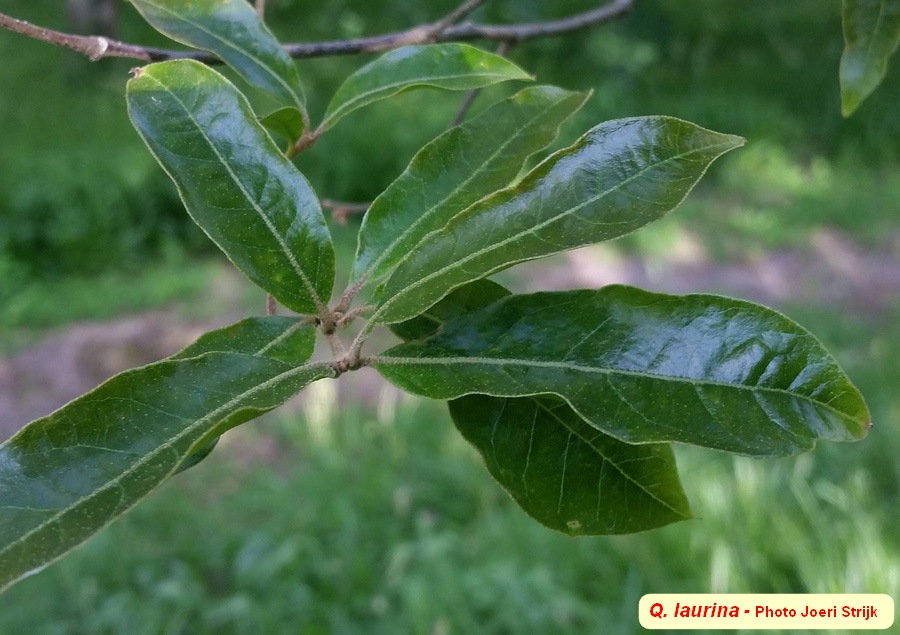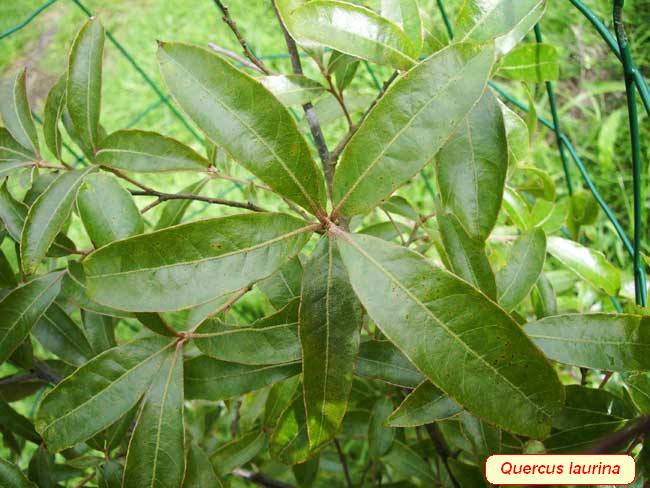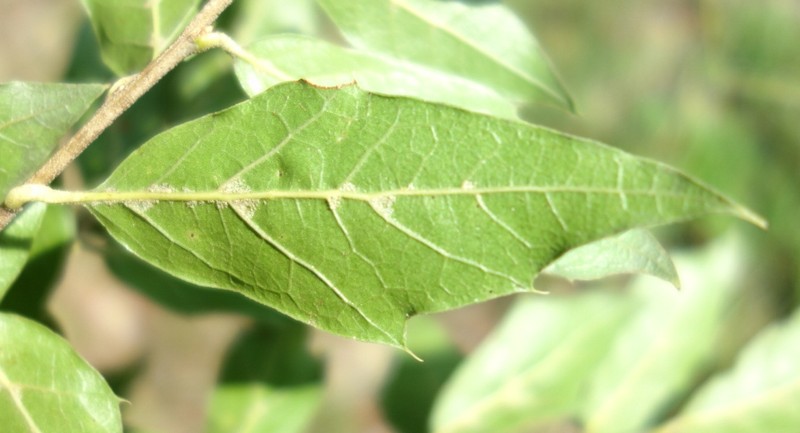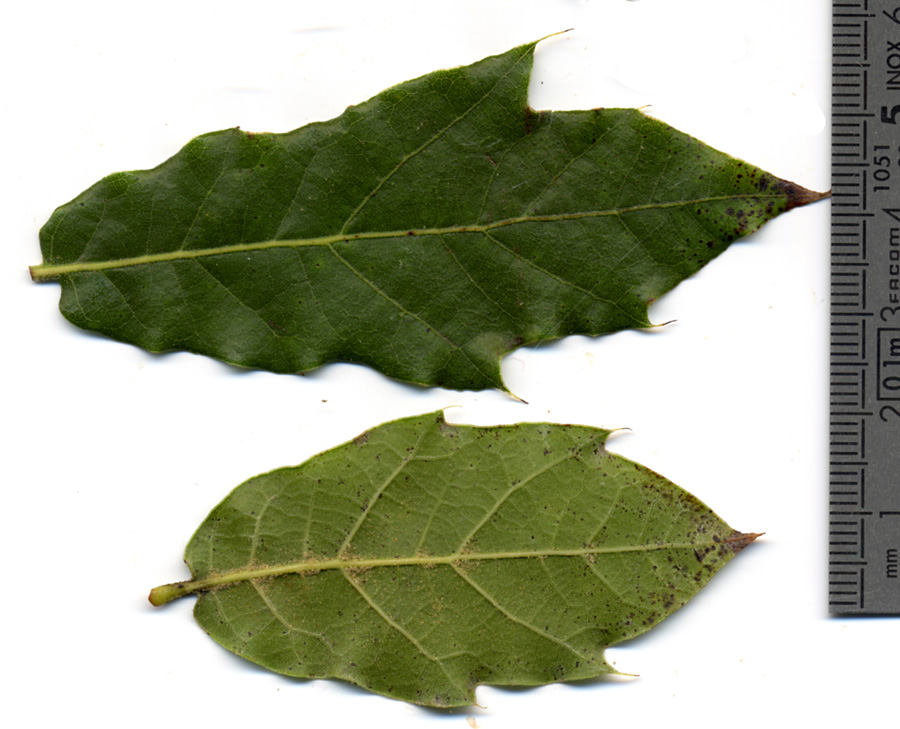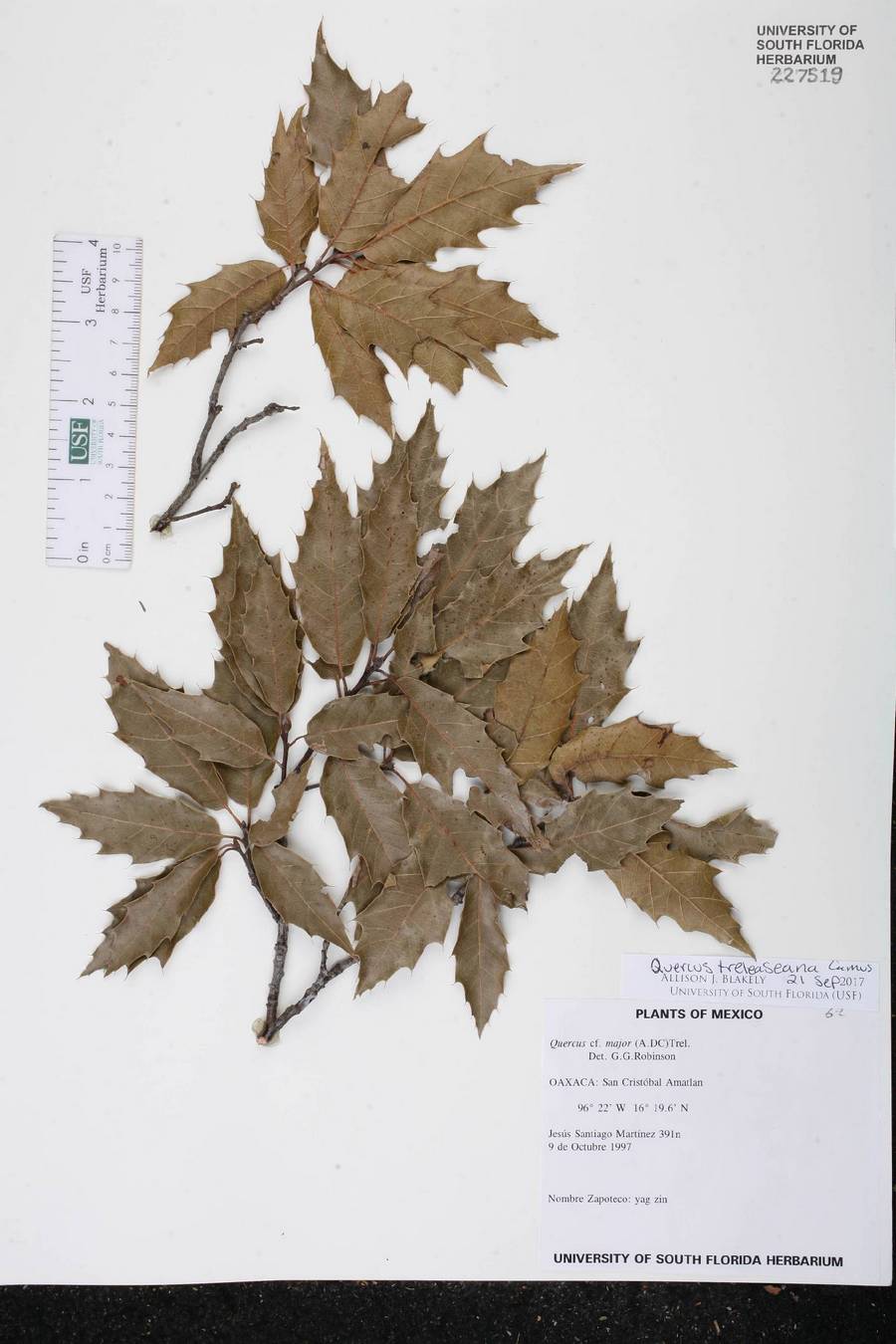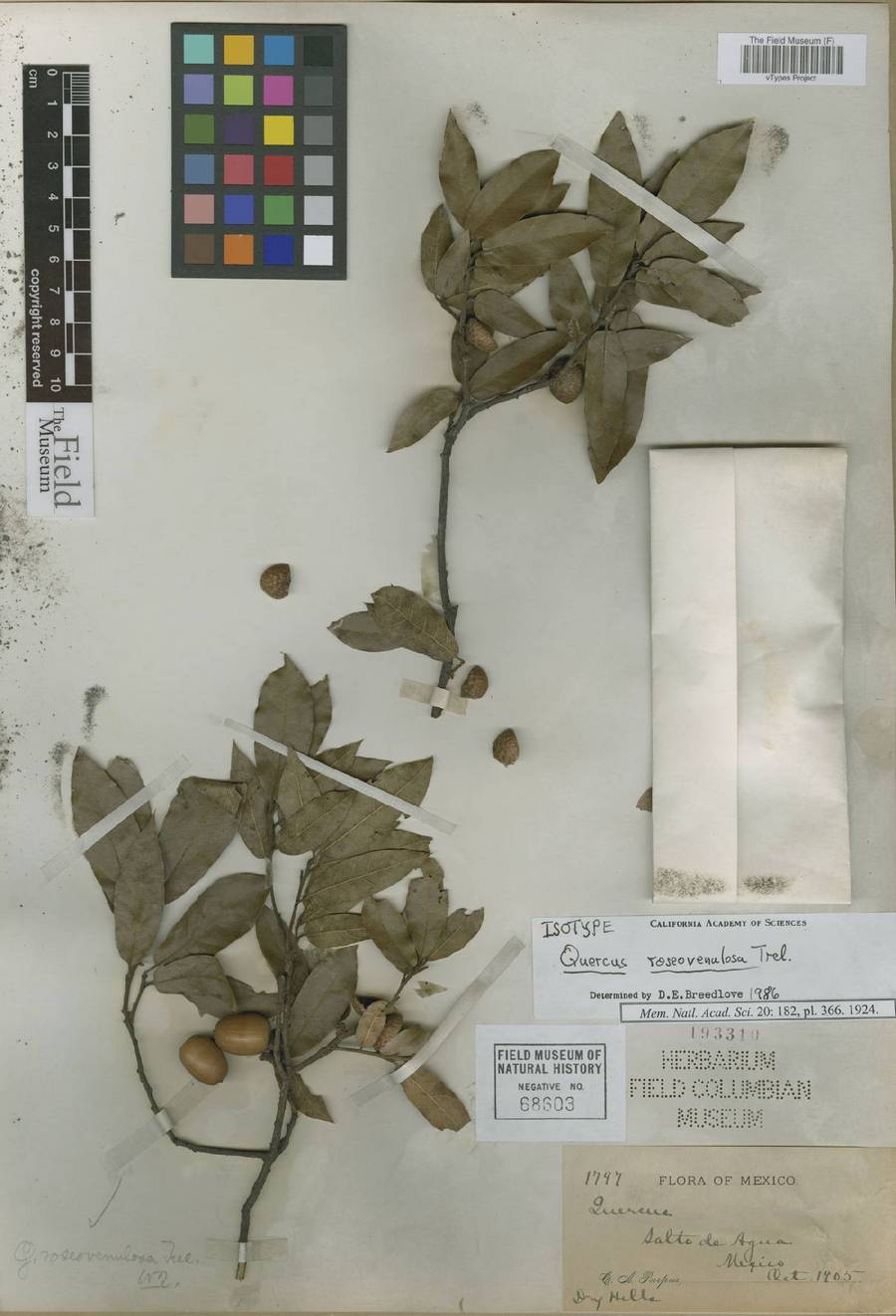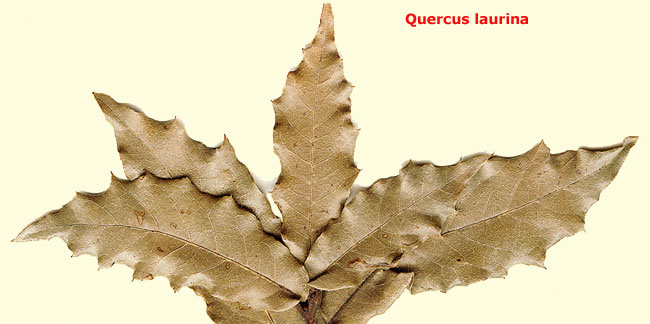| Quercus laurina | |
| Author |
Humb. & Bonpl. 1809 Pl. Aequinoct. 2: 32 Diagnosis here |
| Synonyms | barbinervis
Benth. 1840 bourgaei Oerst. ex Hemsl. 1883 (A. Camus : 357) Diagnosis here bourgaei var. ilicifolia Trel. 1924 caerulocarpa Trel. 1924 (A. Camus : 350) Diagnosis here chrysophylla Bonpl. 1809 (A. Camus : 364) Diagnosis here lanceolata Humb. & Bonpl. 1809 laurina Liebm. ex A.DC 1864 major (A.DC) Trel. 1922 laurina var. major (A.DC) Wenz. 1884 malinaltepecana Trel. 1924 nitens var. major A.DC 1864 orizabae Liebm. 1854 Diagnosis here roseovenulosa Trel. 1924 salicifolia Benth. 1840 not Née 1801 tlapuxahuensis A.DC 1864 Diagnosis here treleaseana A.Camus 1932 (A. Camus : 359) tridens Bonpl. 1809 Diagnosis here |
| Local names | encino uricua ; |
| Range | Mexico in the Sierra Madre del Sur and in the Transmexican Volcanic Belt (Aguascalientes, Colima, Guanajuato, Guerrero, Veracruz, Michoacan, Morelos, Oaxaca, Puebla, Queretaro, Tlaxcala, Jalisco, Hidalgo) ; Guatemala ; 1600 - 3600 m ; |
| Growth habit | 10-30 m; trunk 15-100 cm wide; |
| Leaves |
4-12 x 1.5-5 cm; lanceolate or elliptic-oblanceolate; thick, coriaceous, stiff; apex acute or acuminate, usually bristle-tipped; base varying : usually rounded, more or less attenuate, sometimes cordate or truncate; margin thick, not revolute, most often entire, sometimes weakly toothed in apical 1/3 (1-4 pairs of aristate teeth); dull dark green above, glabrous or with some stellate trichomes near base; lustrous yellow green beneath with some amber glandular and fasciculate stipitate trichomes at vein axils; 6-12 vein pairs, raised adaxially, raised abaxially, slightly curved; epidermis papillose ; petiole 0.5-2 cm, yellow tomentose then glabrescent; |
| Flowers | March-April; staminate catkins hairy, 4 cm long, with more than 10 flowers; pubescent pistillate inflorescences in April, with 1 to 3 flowers; |
| Fruits | acorn 1.5-2 cm ; singly or to 3; peduncle 3-12 mm; cup half-round, not rolled at rim, with thin pubescent scales, enclosing 1/3 of the nut; maturing in 1 or 2 years from September to November; |
|
Bark, twigs and |
bark scaly, rough, dark grey; twig 1-2.5 mm thick, dark chestnut with some lenticels, pubescent at first, becoming nearly hairless at the end of first year; buds ovoid to globose, glabrous, 2-4 mm long; stipules deciduous; |
| Hardiness zone, habitat | hardy ; prefers deep soils; |
| Miscellaneous | -- A. Camus : n° 358; -- Sub-genus Quercus, section Lobatae, Series Erythromexicanae, Group Lanceolatae; -- Q. laurina shows a high morphological variation, but is constant in its amber glandular trichomes on the abaxial surface, its axil tufts of fascicular stipitate trichomes, its dull and dark green leaves with aristate teeth toward the apex of the blade. It can be confused with Q. affinis which has not glandular trichomes on the lower face of the leaves, the 2 faces being nearly concolor and the lateral veins flat adaxially. |
| Subspecies and varieties |
-- Forms hybrids with Q.
affinis which is closely related; |
| Pictures |
|
